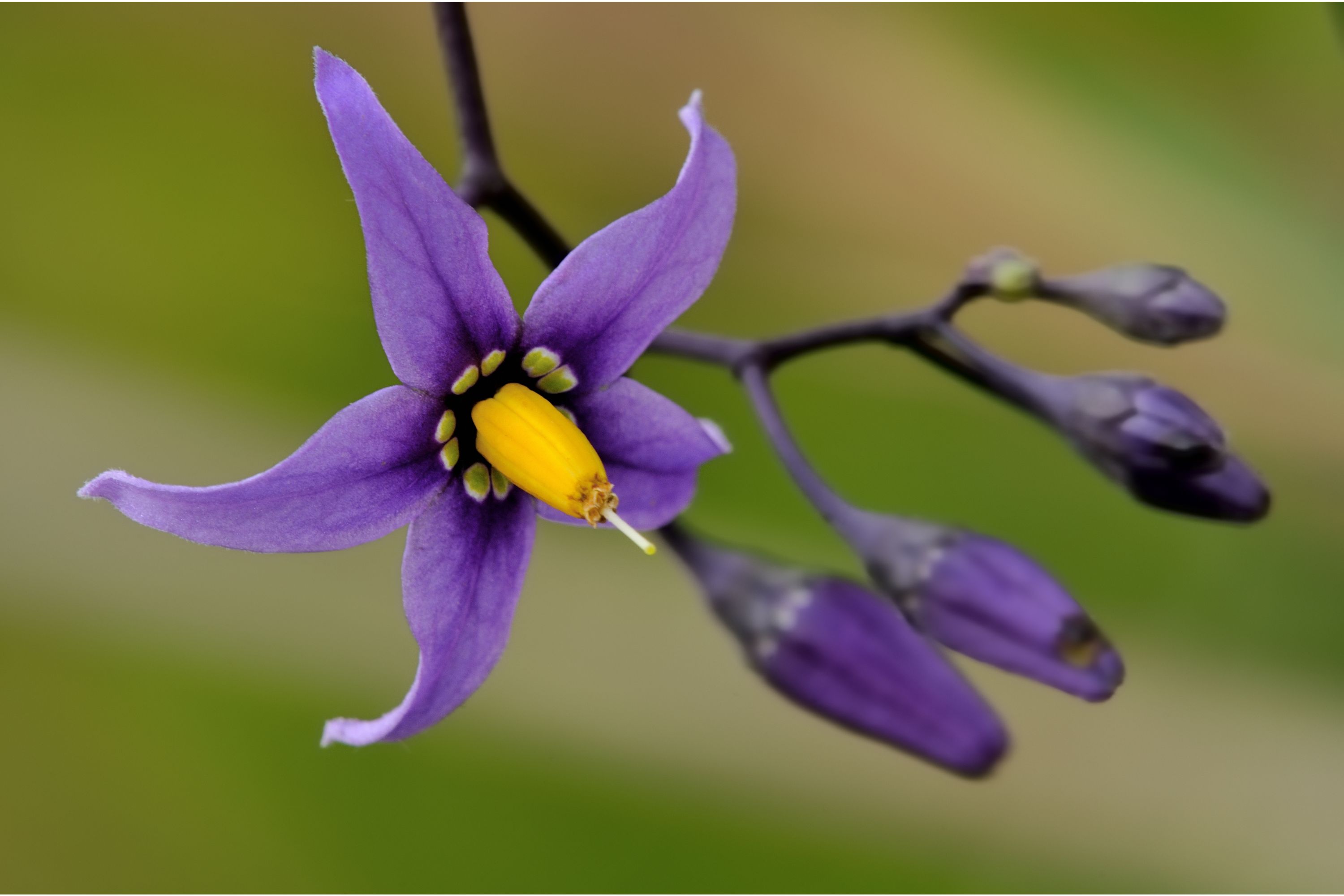Bittersweet nightshade
(Solanum dulcamara)

Description
Solanum dulcamara, commonly known as bittersweet nightshade, is a perennial herbaceous vine in the Solanaceae family. It is native to Europe and Asia but has been introduced to many other regions of the world, including North America. Bittersweet nightshade is a relatively common plant that grows in a variety of habitats, including fields, roadsides, and wetlands. In this article, we will explore the different aspects of this plant, including its physical description, habitat, medicinal uses, toxicity, and control methods. Physical Description Bittersweet nightshade is a deciduous vine that can grow up to 3 meters (10 feet) long. The stems are woody at the base and become herbaceous towards the top. The leaves are alternate, oval to lance-shaped, and up to 10 cm (4 inches) long. They have a dark green color and a glossy appearance. The flowers are purple to blue, star-shaped, and about 1 cm (0.4 inches) in diameter. They are borne in loose clusters at the ends of the branches. The fruits are small, round, and bright red berries that contain numerous seeds. Habitat Bittersweet nightshade can grow in a wide range of habitats, including disturbed areas, forests, wetlands, and roadsides. It prefers moist soils and can tolerate both full sun and partial shade. It is commonly found in agricultural fields and along fence rows, where it can climb and twine around other plants or structures. Medicinal Uses Bittersweet nightshade has a long history of use in traditional medicine. The plant contains a variety of compounds, including solanine, solasodine, and dulcamarine, that have been shown to have medicinal properties. It has been used as a diuretic, a laxative, and a remedy for skin diseases, such as eczema and psoriasis. It has also been used to treat respiratory problems, such as asthma and bronchitis. Toxicity While bittersweet nightshade has some medicinal properties, it is also highly toxic. The plant contains a variety of alkaloids, including solanine and solasonine, that can be toxic to humans and animals. The berries are especially toxic and can cause vomiting, diarrhea, and even death if ingested in large quantities. The leaves and stems are also toxic and can cause skin irritation if handled. It is important to exercise caution when handling or consuming bittersweet nightshade. Control Methods Bittersweet nightshade can be difficult to control because it spreads by both seeds and rhizomes. It can quickly take over an area and outcompete native plants. The best way to control bittersweet nightshade is through a combination of physical and chemical methods. Hand pulling and cutting the plant back can be effective, but it is important to remove all plant parts, including the roots. Herbicides can also be effective, but they should be used with caution and according to label instructions. Conclusion Solanum dulcamara, or bittersweet nightshade, is a common plant that can be found in a variety of habitats. While it has some medicinal properties, it is also highly toxic and can be difficult to control. It is important to exercise caution when handling or consuming bittersweet nightshade and to use appropriate control methods to prevent it from spreading. With proper management, bittersweet nightshade can be kept in check and its negative impacts on native ecosystems can be minimized.
Taxonomic tree:







